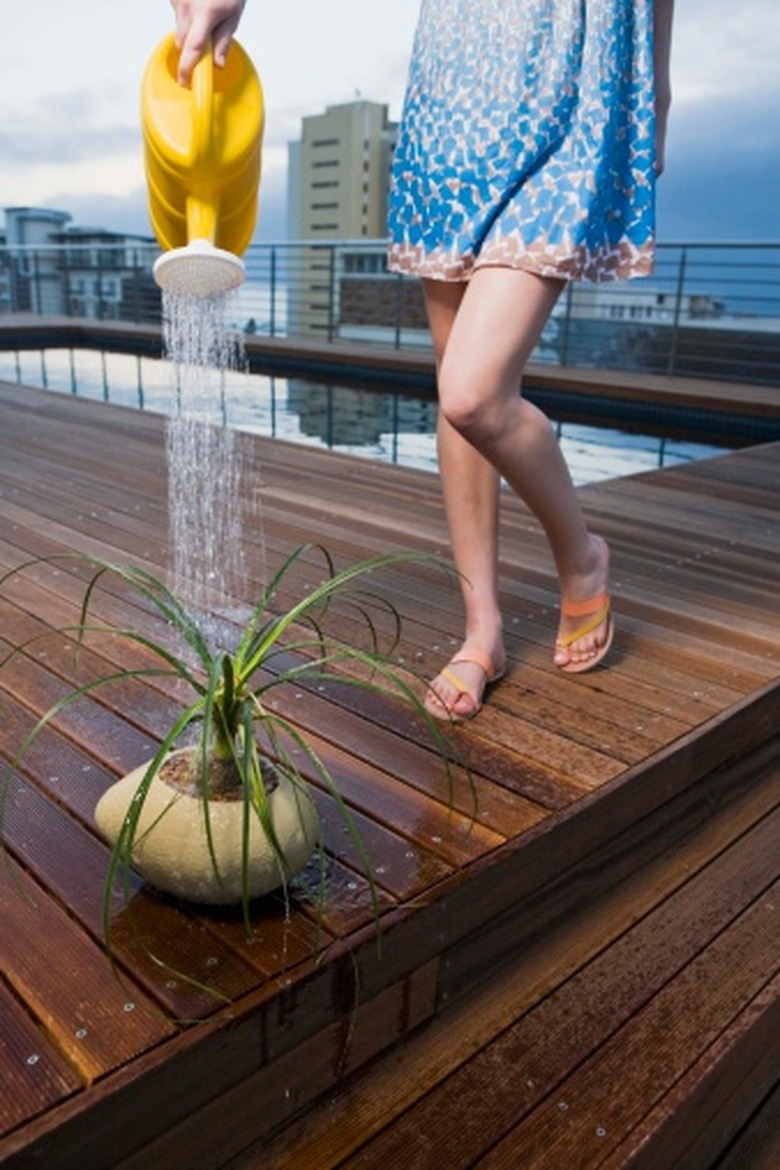How To Divide A Ponytail Palm
Things Needed
- Gloves
- Plastic pots
- Potting soil
- Spade shovel or trowel
- Saw
- Watering can or garden hose
- Plastic garbage bag
- Wooden sticks
Although the ponytail palm, or Beaucarnea recurvata, looks like a palm tree it is actually a unique succulent native to areas of Texas and Mexico. The ponytail palm can be grown indoors in containers, or outdoors in USDA hardiness zones 9 to 11. It is known for its long, thin foliage that can reach lengths of 4 feet. The smooth leaves have a slightly twisting habit reminiscent of a ponytail. The ponytail palm is drought tolerant and low maintenance making it an easy plant to care for.
Step 1
Divide ponytail palms with offshoots, or pups, that are at least one-year old. Perform the division in the spring just as the growing season begins. Wear gloves to protect your hands from scrapes while working with the plants. Prepare plastic pots to plant the divided ponytail palm pups into by filling them one-third full with potting soil.
- Although the ponytail palm, or Beaucarnea recurvata, looks like a palm tree it is actually a unique succulent native to areas of Texas and Mexico.
Step 2
Remove the ponytail palm from its container by tipping it on its side and sliding the root ball gently out of the pot. Dig around the base to expose the roots if the plant is growing outdoors. Use a spade shovel or trowel to gently wedge the root ball apart. Be sure to divide the ponytail palm so that each portion maintains a large root ball. Use a saw to cut the root ball apart for larger specimens.
Step 3
Place the divide ponytail palms immediately into the plastic pots. Place one palm per pot, and add potting soil to each pot and tamp it down firmly around the roots. Plant the ponytail palms at their previous soil depth. Leave the top 1 to 2 inches of the pot devoid of soil to create a reservoir to hold water.
- Remove the ponytail palm from its container by tipping it on its side and sliding the root ball gently out of the pot.
Step 4
Water each pot thoroughly with a watering can or garden hose. Place the container in a plastic garbage bag and secure the edges by pushing wooden sticks through them into the soil. This will keep the moisture and humidity around the potted roots. Do not let the plastic bag touch the trunk of the ponytail palm. Place the potted palms in a bright location, but not in direct sunlight.
Step 5
Check the ponytail palms daily to make sure the soil is still moist, and water as soon as the top of the soil begins to feel dry. Once the ponytail palm begins producing new foliage, remove the plastic bag from around its container and reduce the frequency of watering. Water when the top 2 to 3 inches of soil becomes dry. Fertilize your palm with a general-purpose liquid fertilizer once a month. Transplant your divided ponytail palms outdoors after one year of container growth.
- Water each pot thoroughly with a watering can or garden hose.
- Check the ponytail palms daily to make sure the soil is still moist, and water as soon as the top of the soil begins to feel dry.
